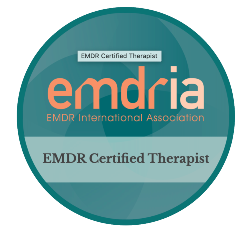What Is Generalized Anxiety Disorder?
Anxiety has always been prevalent in our society, and the prevalence has increased in recent years. If you find yourself among those who are struggling with this, you may feel that no matter what you do, you can’t seem to stop the worries and fears from consuming you.
What exactly is a generalized anxiety disorder and what are the signs of it?
What is Generalized Anxiety Disorder?
 Generalized Anxiety Disorder or GAD is a disorder that involves excessive and unrealistic anxiety about certain situations in one’s life. GAD is a type of anxiety where the worries are constant and the individual doesn’t feel like they have control over them. Someone with GAD tends to worry about things that are close to them like their loved ones, home, career, school, health, or finances. They may experience periods of no exact cause for their anxiety as well as brief periods of relief. Generalized Anxiety Disorder is usually diagnosed if the anxiety happens for at least 6 months.
Generalized Anxiety Disorder or GAD is a disorder that involves excessive and unrealistic anxiety about certain situations in one’s life. GAD is a type of anxiety where the worries are constant and the individual doesn’t feel like they have control over them. Someone with GAD tends to worry about things that are close to them like their loved ones, home, career, school, health, or finances. They may experience periods of no exact cause for their anxiety as well as brief periods of relief. Generalized Anxiety Disorder is usually diagnosed if the anxiety happens for at least 6 months.
The Signs of Generalized Anxiety Disorder
Individuals who receive a diagnosis of Generalized Anxiety Disorder share many of the same signs and symptoms as those who experience other anxiety disorders. Individuals with GAD tend to experience physical and psychological symptoms.
Physical Symptoms
Some of the physical symptoms of GAD include the following:
- Diarrhea
- Easily startled
- Fatigue
- Headaches
- Heart palpitations
- Irritable
- Muscle aches and pains
- Nausea
- Shaking
- Shortness of breath
- Sleeping problems
- Uneasiness
Psychological Symptoms
Some of the psychological symptoms of GAD include the following:
- Constant and ongoing worry
- Difficulty falling asleep
- Difficulty staying asleep
- Fear of making bad or wrong decisions
- Feeling on edge
- Focusing on negative thoughts
- Need of validation
- Inability to relax
- Obsessing over life events
- Unable to stop worrying
How to Cope with Generalized Anxiety Disorder
If you’re experiencing Generalized Anxiety Disorder, you may be wondering what you can do to try to reduce the worries and fears you experience each day. Your anxiety may feel uncontrollable, but there are things that you can do to try to help reduce some of the signs and symptoms you’re experiencing.
Stay Active
One of the best ways you can stay on top of your anxiety is by taking a proactive approach to it. Adding movement into your daily routine is a great way to help reduce stress, improve your mood, and help you to feel better from the inside out.
Try Relaxation Techniques
There are many relaxation techniques to help you stay calm or become calm if you are feeling triggered by something. Many relaxation techniques are things that you can do from the comfort of your own home like breathing or visualization techniques, yoga, or meditation. Try a “Square breathing” exercise of inhaling to the count of three, holding for the count of three, exhaling for the count of three and holding for the count of three. The mindfulness component added by holding the breath at the top and the bottom of the cycle adds a component to the breathing that enhances the benefits of the relaxation.
Seek Additional Support
Six months is a long time to deal with constant stress, worries, and fears each day. It can be a lot to try to handle and manage on your own. Luckily, you don’t have to bear all of the weight. There is help readily available to you if you want and are ready for it.
Asking for help is actually one of the strongest things you can do. Seeking support from a therapist is one of the best ways to help you work through your thoughts, feelings, and emotions. A therapist will be able to work with you to help you figure out triggers and ways to better manage and cope with any stressors moving forward.
Reach out to us today if you’re interested in setting up a consultation for anxiety treatment.





